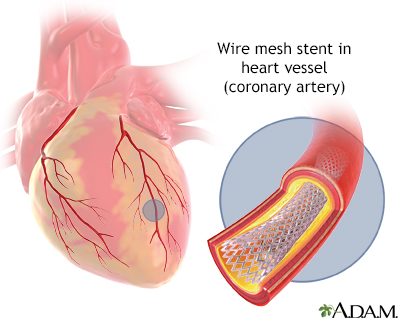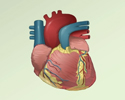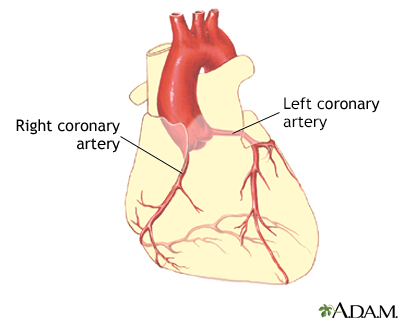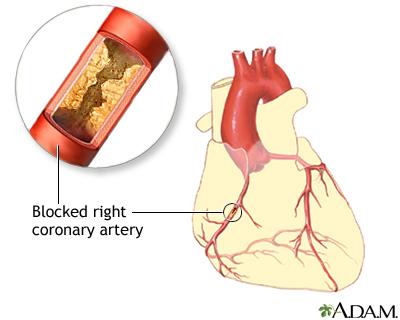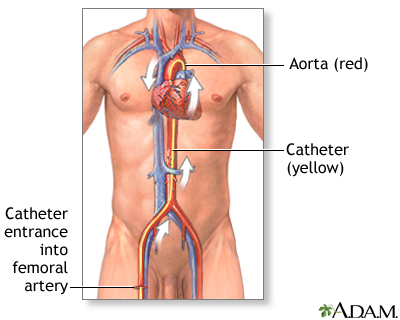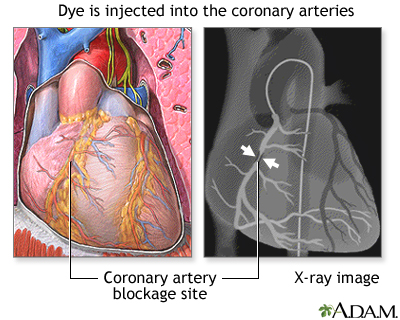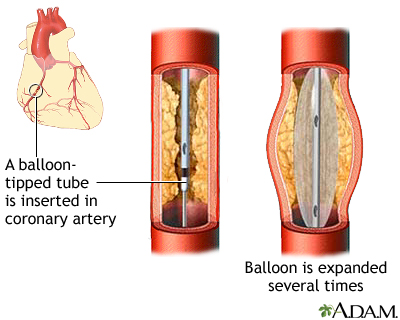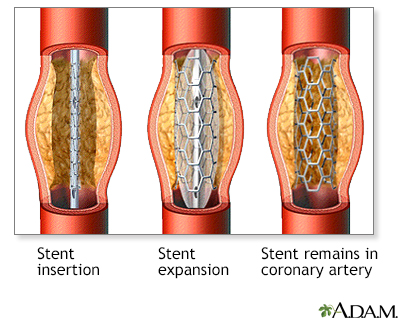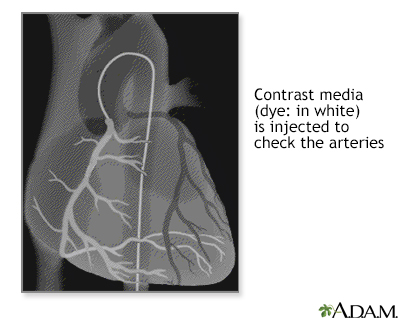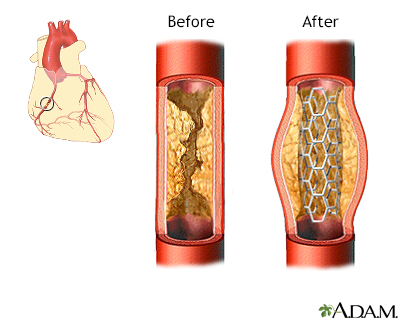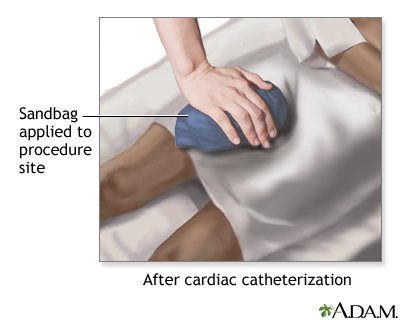Stent
Drug-eluting stents; Urinary or ureteral stents; Coronary stentsA stent is a tiny tube placed into a hollow structure in your body. This structure can be an artery, a vein, or another structure, such as the tube that carries urine (ureter). The stent holds the structure open.
-
Description
When a stent is placed into the body, the procedure is called stenting. There are different kinds of stents. Most are made of a metal or plastic mesh-like material. However, stent grafts are made of fabric. They are used in larger arteries.
A coronary artery stent is a small, self-expanding, metal mesh tube. It is placed inside a coronary artery after balloon angioplasty. This stent prevents the artery from re-closing.
A drug-eluting stent is coated with a medicine. This medicine helps further prevent the arteries from re-closing. Like other coronary artery stents, it is left permanently in the artery.
-
Why the Procedure Is Performed
Most of the time, stents are used when arteries become narrow or blocked.
Stents are commonly used to treat the following conditions that result from blocked or damaged blood vessels:
- Coronary heart disease (CHD) (angioplasty and stent placement - heart)
- Peripheral artery disease (angioplasty and stent replacement - peripheral arteries)
- Renal artery stenosis
- Abdominal aortic aneurysm (aortic aneurysm repair - endovascular)
- Carotid artery disease (carotid artery surgery)
Other reasons to use stents include:
- Keeping open a blocked or damaged ureter (percutaneous urinary procedures)
- Treating aneurysms, including thoracic aortic aneurysms
- Keeping bile flowing in blocked bile ducts (biliary stricture)
- Helping you breathe if you have a blockage in the airways
-
Risks
Related topics include:
References
Tambyraja AL. Vascular and endovascular surgery. In: Garden OJ, Parks RW, Wigmore SJ, eds. Principles and Practice of Surgery. 8th ed. Philadelphia, PA: Elsevier; 2023:chap 22.
Teirstein PS, Kirtane AJ. Interventional diagnosis and treatment of coronary artery disease. In: Goldman L, Cooney KA, eds. Goldman-Cecil Medicine. 27th ed. Philadelphia, PA: Elsevier; 2024:chap 59.
Textor SC. Renovascular hypertension and ischemic nephropathy. In: Yu ASL, Chertow GM, Luyckx VA, Marsden PA, Skorecki K, Taal MW, eds. Brenner and Rector's The Kidney. 11th ed. Philadelphia, PA: Elsevier; 2020:chap 47.
White CJ. Atherosclerotic peripheral arterial disease. In: Goldman L, Cooney KA, eds. Goldman-Cecil Medicine. 27th ed. Philadelphia, PA: Elsevier; 2024:chap 65.




